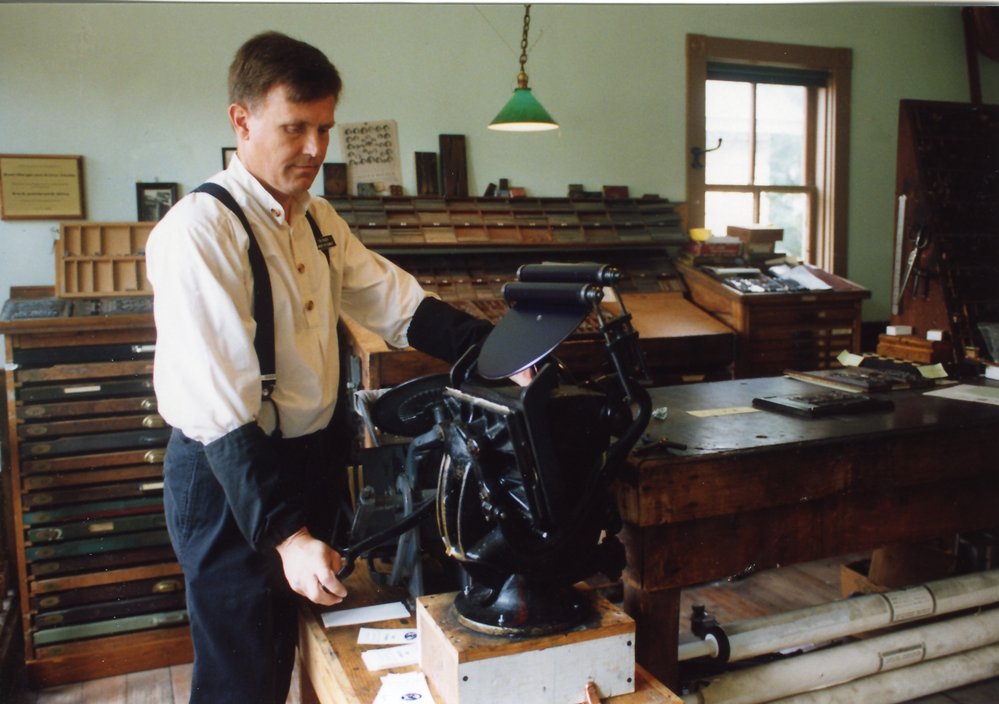
Before an apprenticeship in the print shop can even begin, a prospective apprentice must pass several exams, including mathematics. As a printer, math is vital to ensure spacing is correct and the content fits into the chase, or frames, that will be inked and pressed. Prior to the electric age, many printing presses relied on levers and were operated manually. For example, the Chandler and Price Job Press used a foot pedal lever to turn a wheel which pressed mounted paper to the ink plate. Smaller projects, like tickets, letterheads, handbills, and calling cards were made on hand presses.
As technology improved, a larger, steam-operated Babcock Press was introduced to print shops. Located outside the shop, an engine would be steadily fed coal to heat a boiler of water and create steam which builds in pressure to push a piston. Each time the piston moves, a wheel and axle in the shop would spin and allow the Babcock press to start working. As more print shops could expand to steam-powered and electricity-powered presses, the rate of production and speed at which news could be delivered dramatically increased.